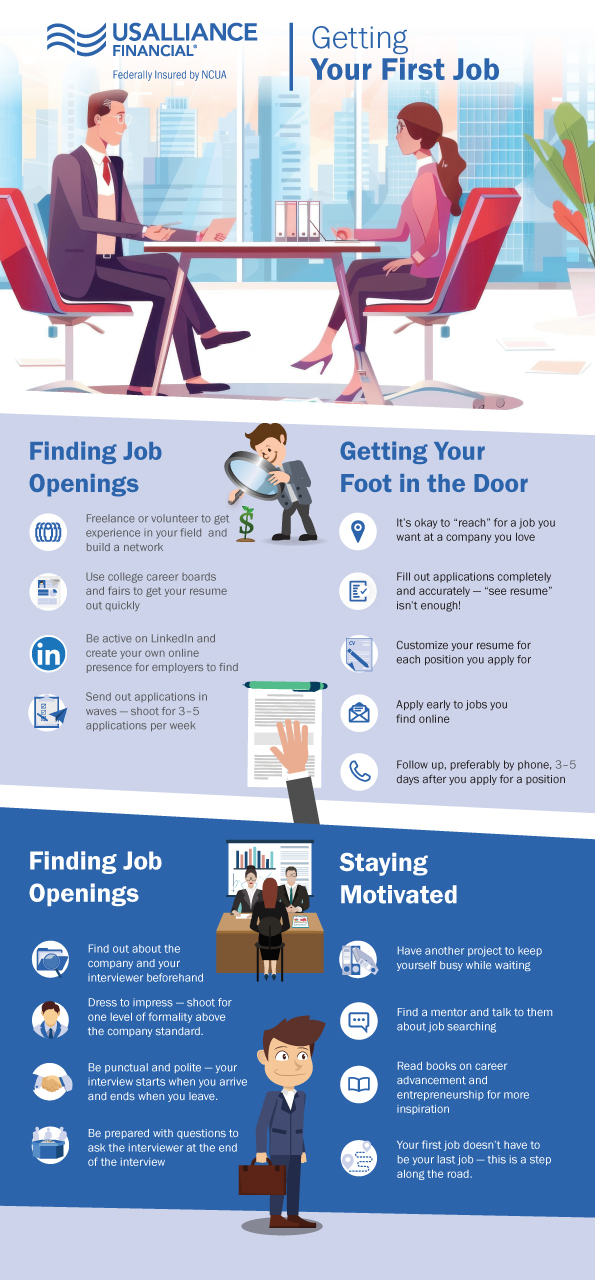
Starting your career can feel overwhelming, especially when you’re not sure where to start. From finding job openings to acing interviews, the process is full of moving parts. But with the right strategies and a little perseverance, landing your first job is absolutely within reach. Here’s a breakdown of how to approach each stage of the journey and stay motivated along the way.
1. Finding Job Openings That Fit You
Landing the right job starts with knowing where and how to search. You can begin with resources close to home, like college career centers, job boards, and career fairs. From there, expand your reach using online platforms. Indeed and LinkedIn are two of the most popular tools for job searches, offering thousands of listings across a wide range of industries.
Building your brand on LinkedIn can help you get your foot in the door and connect with professionals in your desired industry and role. Use your profile to showcase your skills, highlight projects you're working on, and attract the attention of recruiters.
Pro tip:
Be flexible with your search terms. For example, if you're interested in data, try looking for titles like “Business Intelligence Analyst,” “Logistics Analyst,” or “Data Coordinator,” not just “Data Analyst.”
2. Getting Your Foot in the Door
To strengthen your job applications, tailor your resume for each role by emphasizing key accomplishments and aligning your experience with the specific qualifications listed. While meeting 70–80% of the requirements is generally sufficient, focus on essential qualifications and use transferable skills to bridge any gaps. Employers often value adaptability and long-term potential, even when some preferred criteria are unmet.
Leverage clear, well-organized resume templates and tools like Jobscan to optimize alignment with job descriptions.
If you're not landing interviews, try to build experience through volunteering, freelancing, or passion projects. Even short-term gigs or internships can help strengthen your resume. Focus on quality over quantity. Sending 3–5 well-tailored applications a week is more effective than copying and pasting the same resume everywhere. Customization shows effort—and employers notice.
3. Preparing for the Interview
So you landed an interview, now what? Preparation is key. Research the company’s mission, recent projects, and the role you’re applying for. Look up your interviewer if you know their name. Coming in informed shows respect and enthusiasm. Research common interview questions for your desired role and practice your responses with a friend or family member. Know your resume well and be prepared to clearly connect your experience to the job you're applying for.
Dress one level above the company’s dress code to show professionalism. Remember, your interview starts the moment you walk in. Be polite to everyone and come with thoughtful questions to show you’re engaged and serious about the role.
4. Staying Motivated While You Search
Job hunting can feel discouraging, especially when you don’t hear back right away, but that’s completely normal. On average, the process takes about 3 to 6 months, with each application having roughly an 8.3% chance of leading to an interview.
Several factors can influence how quickly you find success, including the economy, your industry, and any employment gaps, which can impact hiring decisions. Timing also plays a role—January and February are peak hiring months, and job boards are typically updated in the late mornings and early in the week. The key is to stay active, keep a positive mindset, and make the most of the resources available to you.
Use downtime to pursue a side project, read books about career development, or take a free online course to learn something new. It also helps to talk to someone who’s been in your shoes. A mentor—whether a professor, supervisor, or friend—can offer guidance, feedback, and perspective when the process feels frustrating.
Final Thoughts:
Landing your first job takes effort, resilience, and a bit of strategy. Keep refining your resume, growing your network, and showing up as your best self. Every application you send is a step closer to the role that’s right for you.
Take a look at our detailed infographic on landing your first job!

Comments